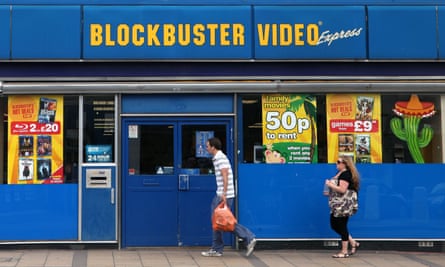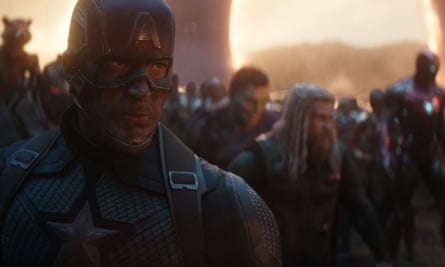After weeks of ballyhoo that included inundating social media with a list of films from its archive, the subscription-based, on-demand video streaming service Disney+ has finally launched in the US, Canada, Australia, New Zealand and the Netherlands, with a UK release date set for early next year.
The streaming service joins an increasingly crowded field, which includes the Disney-acquired Hulu, Amazon Prime Video, Apple TV plus, and the now positively venerable Netflix. It was all so simple once, but in the space of a decade, cinema and TV streaming services have reached a state of increasing Balkanisation, with an oversaturation scrum ahead as they vie for consumer cash.
How did we get here? At the outset of this decade, we were looking at a drastically different home media landscape. That the brick-and-mortar video store was going to largely go the way of the dodo was something already understood back then, but the implications of this extinction – beyond the disappearance of an ideal low-stress, low-wage job for kids coasting after film school – were not yet clear.

In 2007 Netflix, which up to that point had been a mail-order service, introduced its on-demand streaming platform. One might have been forgiven for believing then that we were on the verge of fulfilling the promise of the internet: everything available, all the time. But things went another way: Netflix became not just a content provider but a content producer, underwriting both TV programmes – beginning with House of Cards in 2013 – and feature films.
At first Netflix kept its original films out of cinemas, pursuing a strategy that made the very concept of cinemagoing a stated enemy; this was softened considerably following blowback at the 2017 Cannes film festival, but the company’s hardball negotiations with exhibitors have kept high-profile projects like The Irishman out of major cinema chains.
Disney+ enters the field from a very different position from its competition, for the company brings a deep back catalogue into its platform launch. Much is being made of all-access liberation at Disney+ – everything from Avengers: Endgame to Darby O’Gill and the Little People – but we’ve seen this particular bait-and-switch game. Companies build their subscriber base by offering lip-smacking inducements, like Netflix’s once much broader film selection, that will gradually be withdrawn as the platform pivots away from providing what you might want to watch to what the corporate entity wants you to watch.
In every case, the triumph of the streaming services has meant a ceding of consumer choice, as corporate copyright holders – who never, incidentally, loved the idea of videos and DVDs putting a permanent collection in consumers’ hands for a single payoff – gain ground, controlling the spigots on archives built by generations of paying customers. In order to maintain platform propriety, Netflix releases such as Orson Welles’s The Other Side of the Wind and The Irishman may never be released on physical media, meaning they will by readily available only as Netflix decides to make them available.

Last year, a mutter of discontentment was heard when iTunes users discovered that movies they’d purchased had disappeared overnight, and that the only way to guarantee they’d retain access to these purchases was to download and store them. The cloud is a lovely dream, but a dream all the same: until it’s on a disc or a thumb drive or a VHS tape at your place, you don’t own what you own.
While working to improve their optics, Netflix has continued unabated the purge of film history from its streaming platform. From Netflix’s point of view, this makes sense: streaming services, unlike shops renting physical discs, have to pay the rates requested by copyright holders, and a desire to circumnavigate this by building an original library is what brought Netflix into the original programming game in the first place.
Be that as it may, there’s no doubt that now they’re in the original programming business, the streaming giants have every incentive to minimise viewer exposure to film history and divert attention to the new “content” that they’ve made. Netflix has all but divested itself of pre-1980 cinema, and at present very nearly its only available titles from the 1940s are the wartime documentaries discussed in its original 2017 series about Hollywood and the second world war, Five Came Back.
While there are curated streaming services pitched to cinephile audiences – Criterion and Mubi, for example – it is worth considering what has been lost as broadcasting has given way to interest-specific narrowcasting. For a generation raised on streaming platforms, the likelihood of having the sort of chance encounters that might alert one, during one’s formative years, to the existence of other options is decreasing.
At least shops like Blockbuster offered the possibility of running across a VHS of Luis Buñuel’s The Phantom of Liberty, mulling over the grotesque cover artwork and thinking, “OK, why not?” To put it another way: once you know what you’re looking for, it may be easier than it used to be to access old, eccentric, and esoteric media – but there are fewer and fewer places where you might accidentally bump into this stuff in the first place.
Am I, pushing 40, a former video store clerk, given to bouts of nostalgia for analogue media? Undoubtedly. But one doesn’t need to be backward-looking to believe that this shift from consumer to corporate power, if its implications aren’t understood and adjusted for, augers badly for film culture in years to come.
Algorithm-driven filter bubbles minimise chance encounters. They show you what’s like what you already like, and steer you away from the unknown. As a result, “old” movies – anything that predates, say, Indiana Jones and the Raiders of the Lost Ark – are the least visible, less a part of the broader cultural ambience than they have been in my lifetime. Wilfully or otherwise, the streaming oligopoly is cultivating a subscriber base unaware that there is anything else beyond its content. It’s a conundrum that should worry anyone who has ever loved the cinema, for it’s difficult to imagine a bright future for a medium without a past.
